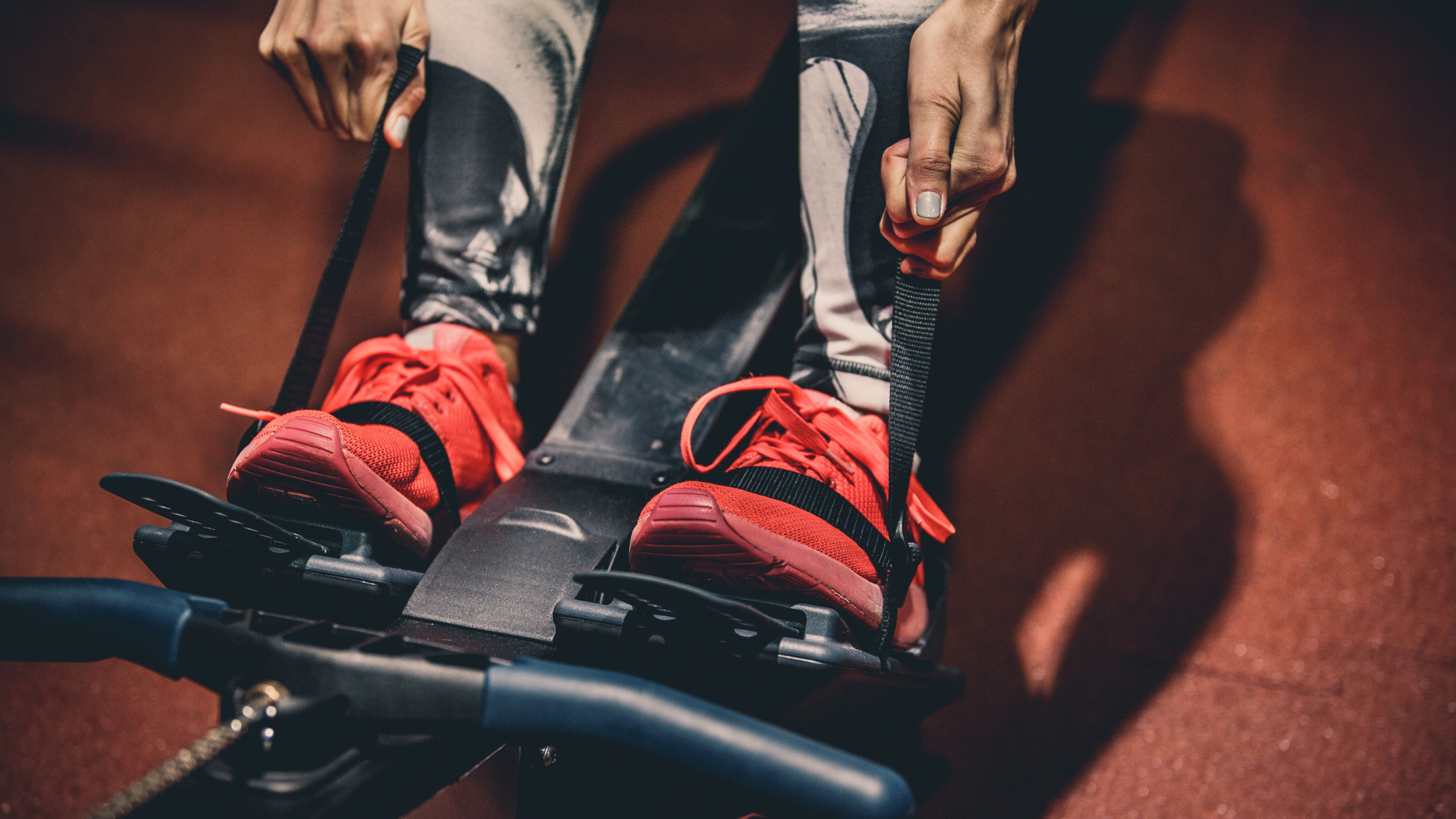Master Rowing For CrossFit With Expert Tips From The Team At Concept2 And Elite Athletes
Improve your performance in CrossFit workouts which feature a rowing machine with these set-up and technique tips

The rowing machine has been a fixture at the CrossFit Games since the inaugural 2007 event. It’s also helped build some of the best engines in the sport, from 2009’s winner Mikko Salo to five-time champ Mat Fraser.
To help you up your game, we’ve enlisted the help of Alex Dunne, managing director of Concept2 which makes the Concept2 RowErg, the rowing machine used in the CrossFit Games and boxes worldwide (and Coach’s pick for the best rowing machine). I’ve also quizzed Reign Total Body Fuel ambassador and serial Games athlete Emma McQuaid.
They talk you through their top tips for setting up your machine for success, and the technique you should be using to start pulling sub-two-minute splits with ease.
How To Set Up A Rowing Machine For CrossFit
Before you start setting 2K test records you need to set up your machine correctly, and your first job should be to sort out the foot straps.
“Don’t just jump on and go,” says McQuaid. “If I rowed with the straps set to one [the highest setting] then my quads would lock solid.”
“Strapping your feet into the machine in the right spot affects foot and seat comfort,” explains Dunne. He advises adjusting the footplates using the five numbered settings so the strap is in line with the ball of your foot, although, he adds, if you’re less flexible you might want to let your feet sit a little lower by choosing a higher foot strap setting number so you can reach forward more easily.
This is the case for McQuaid, who tends to let her feet sit lower to counter the limited mobility in her ankles.
Sign up for workout ideas, training advice, reviews of the latest gear and more.

The second thing Dunne recommends focusing on is your seat. “If your butt isn’t happy while you’re rowing, chances are the rest of you isn’t happy either,” says Dunne.
If you feel like you need some extra padding, he suggests placing a towel or bubble wrap over the seat. Alternatively, Concept2 offers a seat pad or rowing shorts which might make you more comfortable.
If this doesn’t work and your backside still ends up void of all feeling, he counterintuitively suggests trying less padding on your seat. “Too much can cause cramping and numbness,” says Dunne.
What Damper Setting Should You Use In CrossFit
The damper is the lever on the side of the fan cage and it changes the amount of air allowed into the flywheel. The higher the setting, the more air is allowed into the fan cage as you row, and the heavier the stroke feels.
There’s no requirement for which damper setting to use during CrossFit workouts and competitions, so Dunne says the best thing to do is play around and find which one feels best for you.
“We recommend starting on a damper setting of three to five,” says Dunne. “Really focus on technique, and as you improve you may find that a lower damper setting gives you the best workout and results.”
McQuaid agrees, saying she works off a “rough guide for females of between three and five, and for guys it’s anything from five to seven”.
Despite this, you might be tempted to thrust the damper setting up to 10 and try to crank out powerful pulls to maximize your output, but Dunne says this is a poisoned chalice.
Doing this can exhaust your muscles before you’ve had a chance to experience the rowing machine’s cardio perks. Instead, find a damper setting that allows you to achieve a consistent output, which you can gauge from feedback on the monitor.
You might also want to vary the damper setting depending on the sort of workout you’re tackling. Dunne recommends trying a lower setting for a longer, aerobic-focused WOD, and higher settings if you’re looking to develop strength and power during shorter sessions.
Rowing Technique
There are four stages of each rowing stroke; the catch, the drive, the finish and the recovery. I asked Dunne to break down each one, so you can hone your technique, one step at a time.
1. The Catch
This is the starting point of each stroke. Your knees should be bent so your shins are vertical, and your arms should be straight out in front of you holding the handle.
Look straight ahead, and keep a neutral spine with a slight forward lean towards the fan cage.
It’s not necessary to keep your heels connected to the footplates during this phase. Allow them to lift if you need them to.
2. The Drive
Use your legs to drive through your feet and push your body away from the fan cage.
As your legs straighten lean back slightly, maintaining a neutral spine, then use your back and biceps to pull the handle to your sternum.
The chain attaching the handle to the fan wheel should remain flat throughout this motion.
3. The Finish
At the end of the drive phase, hold your position for a split second. Your legs should be extended, you should be leaning back slightly, and the handle is pulled to your body just below your ribs.
4. The Recovery
This is the phase people often switch off for, so pay attention. Instead of just crumpling back into the catch position, be deliberate about how you transition between the two, as this is your chance to take a breath before your next big drive.
First, extend your arms, then hinge at the hips to lean towards the flywheel. Once your hands have passed your knees, Dunne says, begin to bend your knees to slide the seat back towards the flywheel.
You should also try to relax your grip here to stop your forearms fatiguing.
Workouts
There are plenty of CrossFit workouts with rowing as a prevalent feature. Perhaps the best-known is Jackie, which tasks you to complete a 1,000m row followed by 50 empty-bar thrusters and 30 pull-ups as quickly as possible.
Or, if you’re after a rowing workout that keeps you in your seat throughout, try a 2K test. The gold standard for covering the distance is seven minutes, but be warned, it’s not as easy as it sounds. This 2K rowing plan will help improve your time.

Harry covers news, reviews and features for Coach, Fit&Well and Live Science. With over a decade of training experience, he has tried everything from powerlifting to gymnastics, cardio to CrossFit, all in a bid to find fun ways of building a healthy, functional body.
